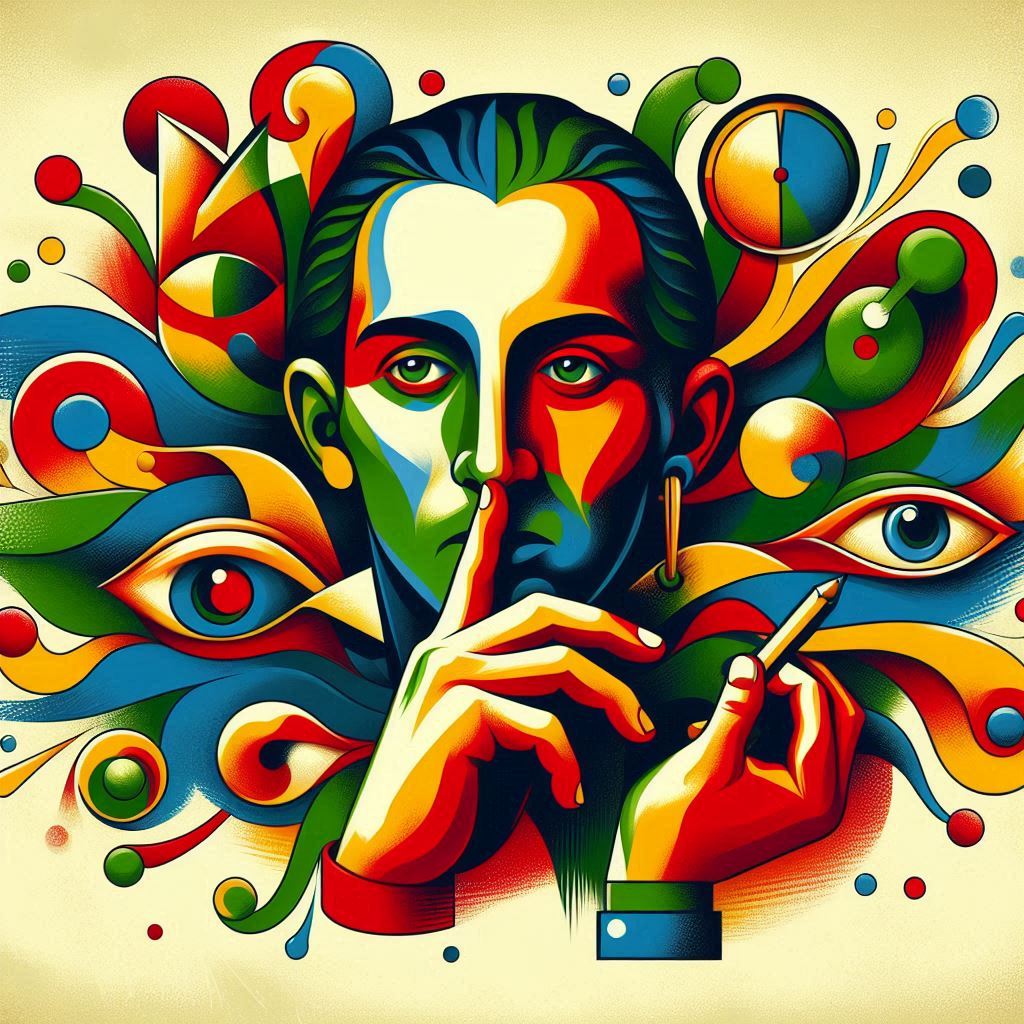Discover the 5 Stages of Creative Problem Solving
Have you ever faced a problem that felt too hard to fix? Creative problem-solving is a skill that can help you deal with tough situations. By understanding the five stages of creative problem-solving, you can learn how to approach problems differently and find new solutions. Each stage plays an important role in solving problems, from coming up with ideas to evaluating solutions. Let’s look at the five stages of creative problem-solving and how they can help you tackle everyday challenges.
What is Creative Problem Solving?
Creative problem-solving means finding unique solutions in a new and inventive way. Unlike traditional methods, it encourages thinking outside the box and exploring unconventional ideas. There are five stages: preparation, incubation, insight, evaluation, and elaboration. These stages guide individuals through a structured process, encouraging the exploration of ideas, refinement of concepts, and assessment of solutions.
They provide a framework for transitioning between stages, allowing flexibility and iteration. For instance, in the preparation stage, individuals gather information and explore potential approaches. Then, in the insight stage, they have a “eureka” moment, leading to the evaluation of ideas. This transition allows for continuous idea generation and refinement, leading to innovative outcomes.
What are the 5 stages of creative problem solving?
Preparation: Understanding the Issue
The preparation stage of creative problem-solving is essential. It helps to define the problem clearly, enabling individuals to identify the main components that need attention.
For example, when creating a new marketing campaign, defining the target audience and campaign objectives is essential in the preparation stage. Gathering information is also crucial at this stage. It helps to understand the issue comprehensively and identify potential solutions. For instance, if a company wants to improve customer satisfaction, gathering feedback from current customers will provide valuable insights. Therefore, the preparation stage is vital in laying the groundwork for the creative problem-solving process.
Define the Problem

The problem is that creative problem-solving is unclear and ineffective. It’s caused by a lack of structure and guidance and a misunderstanding of the stages of creative problem-solving. This problem impacts the situation by hindering the ability to approach challenges creatively and limiting the potential for innovative solutions.
Gather Information

Gathering information is essential in the creative problem-solving process. It helps individuals understand and define the problem effectively. Obtaining relevant data and insights allows individuals to gain a deeper understanding of the issue, identify obstacles, and recognize opportunities for innovation.
Incubation: Letting Ideas Marinate
During the incubation stage of creative problem-solving, individuals can benefit from techniques such as taking a break and doing other activities. This helps their ideas develop and marinate.
Taking a mental break or focusing on less demanding tasks can help the subconscious mind work on the challenges one might face. Allowing ideas to incubate enables individuals to think about the problem from different angles and perspectives, increasing the likelihood of finding a creative solution.
This stage gives the brain a break from intense thinking and brainstorming during preparation, contributing to creative problem-solving. Allowing ideas to marinate during the incubation stage can lead to improved insight and evaluation of the problem-solving process. It can also reduce the likelihood of burnout and fatigue, enhancing the overall quality of the solution developed during the elaboration stage.
Set Problem Aside

It’s helpful to set a problem aside during the creative problem-solving process. Engaging in different activities can allow new ideas to develop and provide a fresh perspective on the issue.
For example, taking a walk or working on an unrelated project can give the mind a break and allow ideas to develop. Setting a problem aside during the creative problem-solving process has many benefits. It can lead to a more innovative approach, spark new ideas, and prevent frustration and burnout. This approach provides space for insight and leads to a more successful creative problem-solving process.
Engage in Different Activities

Engaging in different activities can help with creative problem-solving.
For example, going for a walk, cooking, or playing a musical instrument can stimulate the brain and generate innovative ideas.
During the incubation stage, these activities can give the mind a break from the problem, allowing the unconscious to work on finding a solution.
This can lead to sudden moments of insight and creativity.
To transition between stages of problem-solving, individuals can push their limits by attending workshops or collaborating with others.
These activities can offer a fresh perspective and encourage the brain to think differently, leading to more effective problem-solving strategies.
Insight: The Aha Moment
“The Insight: The Aha Moment” is a big part of solving problems. It’s when a solution suddenly becomes clear. This can happen because of different things, like experiences, observations, or past problem-solving attempts. Being open to new ideas helps make these “Aha Moments” happen. Creating a creative environment, like making time for brainstorming and seeing things from different angles, can also help.
The “Insight: The Aha Moment” helps solve problems by giving clarity and pointing to the next steps. It helps focus on the best solutions, leading to better and faster problem-solving.
Wait for the Spark

Creative problem-solving involves waiting for the spark. It lets individuals take time to understand the issue before finding a solution, which helps ensure the solution is effective. Recognizing the solution leads to the insight stage by providing a sudden understanding or realization of the problem. It often feels like an “aha!” moment where ideas come together.
For instance, a graphic designer may be stuck on a project, but after a break, they may suddenly see a solution, leading to project completion.
Recognize the Solution

Recognizing the solution is an integral part of creative problem-solving. It is the final stage of finding a resolution. People can identify the solution by being open to new ideas and looking at the problem from different perspectives.
Recognizing the solution impacts the overall outcome of the process by providing closure and allowing for the implementation of the resolved issue. This helps to conclude the problem-solving process successfully.
Evaluation: Testing Solutions
It’s vital to assess ideas effectively during the evaluation stage of creative problem-solving. This can be done by setting clear criteria for success, defining specific goals, considering feasibility, and evaluating potential impact.
For example, before launching a new product, a company might evaluate market demand, production costs, and potential profitability based on consumer trends and competition.
During the evaluation stage, it is crucial to gather feedback from relevant stakeholders, conduct user testing, and make necessary adjustments based on the results. In software development, this may involve seeking user feedback through beta testing to identify and address potential issues or areas for improvement.
Evaluating ideas rigorously before implementation reduces the risk of investing time and resources into ineffective solutions. It significantly contributes to the process of finding practical solutions.
Assess Ideas

During the creative problem-solving process, it’s vital to assess ideas effectively. Factors like feasibility, relevance, and potential impact should be considered. This helps evaluate each idea’s originality and practicality to determine the most suitable ones for the problem.
In the assessment stage, criteria such as cost-effectiveness, alignment with objectives, and adaptability to change should be used to prioritize ideas. This ensures that the chosen concepts are innovative, feasible, and beneficial.
Thorough evaluation and prioritization of ideas in the assessment stage play a crucial role in guiding the successful resolution of the problem at hand.
Refine Solution

To refine a solution, you can:
- Address potential flaws or weaknesses by seeking feedback from others and conducting thorough testing.
- This helps identify any overlooked issues and ensures the solution is robust and effective.
Specific steps to further improve the proposed solution include:
- Conducting additional research
- Brainstorming alternative approaches
- Seeking inspiration from unrelated fields or industries.
Expanding the exploration scope makes the creative problem-solving process more dynamic and diverse, leading to more innovative and impactful solutions.
Additional criteria or considerations during the refinement of the solution are:
- Ethical implications
- Potential impact on different stakeholders
- Long-term sustainability of the solution.
By considering these factors, the refined solution can be more comprehensive and responsible, meeting the needs of all parties involved.
Elaboration: Applying the Solution
The elaboration stage in the creative problem-solving process involves expanding and refining the potential solution to ensure its successful implementation.
To achieve this, intensive research, brainstorming, and collaboration with others are essential. These help identify any potential flaws and address them effectively.
For example, a marketing team may further develop a new advertising campaign concept by gathering feedback from focus groups and adjusting the messaging accordingly.
To effectively apply the solution, specific action steps, such as creating a prototype, conducting feasibility studies, and obtaining user feedback, can be taken.
Transitioning from the previous stages of creative problem-solving to the elaboration stage means moving from generating potential solutions to working on the details of the most promising ideas.
This requires shifting from broad creativity to focused implementation, ensuring the idea is refined, practical, and ready for execution. For instance, after generating various design concepts for a new product, the transition to the elaboration stage involves selecting the most viable option and developing detailed specifications for prototyping and testing.
Develop Action Steps
During the insight stage of creative problem-solving, you can develop specific action steps by identifying the key components of the solution and breaking them down into achievable tasks.
For instance, if the problem concerns improving workplace morale, you might find that introducing team-building activities could help. The action steps could include researching suitable team-building exercises, seeking employee feedback on preferred activities, and planning the implementation logistics.
To ensure the action steps are practical and effective, you can conduct a small-scale trial of the proposed solution or seek input from relevant stakeholders. For example, if the action involves implementing a new software system, performing a trial run with a small team can help identify potential issues before full-scale implementation.
To move from the elaboration stage to implementation, you can create a detailed timeline and assign specific responsibilities to team members. For instance, when developing a marketing campaign, you must finalize the campaign elements and set clear deadlines for the design, content creation, and distribution stages.
Implement the Solution
The 5 stages of creative problem-solving are:
- Preparation: Gathering information, doing research, and identifying the problem.
- Incubation: Subconsciously working on a solution.
- Insight: The “aha” moment when the solution presents itself.
- Evaluation: Critically analyze the solution to determine its effectiveness.
- Elaboration: Refine and develop the solution further.
Each stage has a specific role in the creative process. Transitioning from one stage to the next requires a shift in thinking and approach. For example, transitioning from preparation to incubation may involve taking a break or engaging in an unrelated activity to allow the mind to work on the problem subconsciously. Similarly, transitioning from insight to evaluation may include testing the solution in different scenarios or seeking feedback from others.
Each stage of creative problem-solving is essential and contributes to the overall process.
How Each Stage Fits Into the Creative Process
Link Between Stages
Transitioning from the Incubation stage to the Insight stage in creative problem-solving is essential. It allows the individual to step back from the problem. This mental break lets new perspectives and ideas emerge, leading to the “Aha!” moment and triggering creativity to move forward.
The Evaluation stage also plays a role. It connects the Insight and Elaboration stages by providing a platform for examining ideas in a structured manner. It rules out unfeasible ones and retains the best ones. This stage also helps identify potential roadblocks that could arise during implementation.
The transition from the Preparation to the Incubation stage significantly impacts the overall link between stages. It lays the groundwork for creative problem-solving. This stage is also a time to identify the problem, gather necessary information, and define the constraints before consciously moving the problem to the back of the mind. This process allows the subconscious to chip away at the problem, giving new insight.
The transition from One Stage to the Next
Transitioning from the Preparation stage to the Incubation stage in creative problem-solving encourages individuals to take a break from the problem and let their minds wander. This allows them to think creatively and approach the problem from different angles. By doing so, the subconscious mind can work on the issue, often leading to unexpected “aha” moments.
For example, individuals may take a walk or engage in physical activity while incubating a problem, transcending traditional problem-solving thinking.
Using critical analysis tools, creative problem-solving can be achieved from the insight stage to the evaluation stage. Individuals should objectively review their ideas and consider key questions like, “Does this idea align with the problem I am trying to solve?” Group evaluations can also aid in this transition, as receiving feedback from others can help refine and improve ideas.
The transition from the Evaluation stage to the Elaboration stage is essential for implementing successful solutions. Elaboration involves fleshing out the best ideas generated during the evaluation phase, allowing for refinement and iteration. Teams may engage in brainstorming sessions, create prototypes, or conduct small-scale trials to test the solution’s feasibility. This process paves the way for implementing the most suitable solution to the problem at hand.

Vizologi is a revolutionary AI-generated business strategy tool that offers its users access to advanced features to create and refine start-up ideas quickly.
It generates limitless business ideas, gains insights on markets and competitors, and automates business plan creation.
Vizologi
A generative AI business strategy tool to create business plans in 1 minute
FREE 7 days trial ‐ Get started in seconds
Try it free

